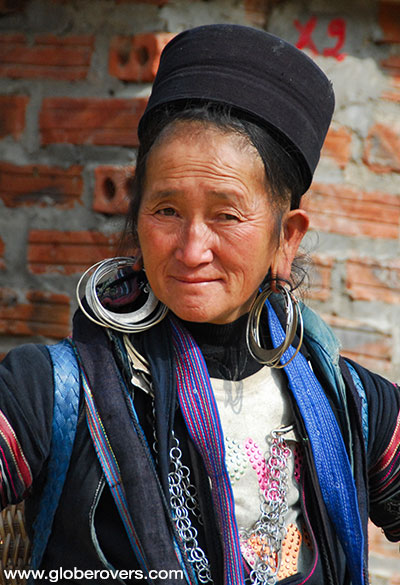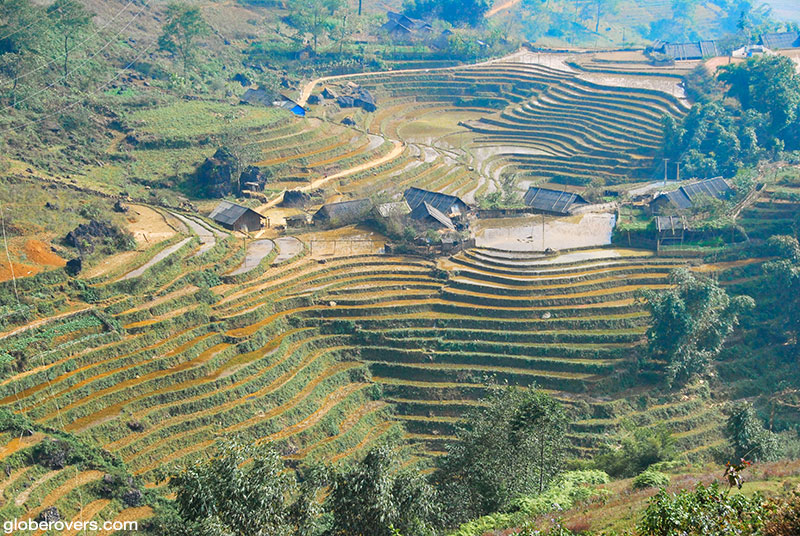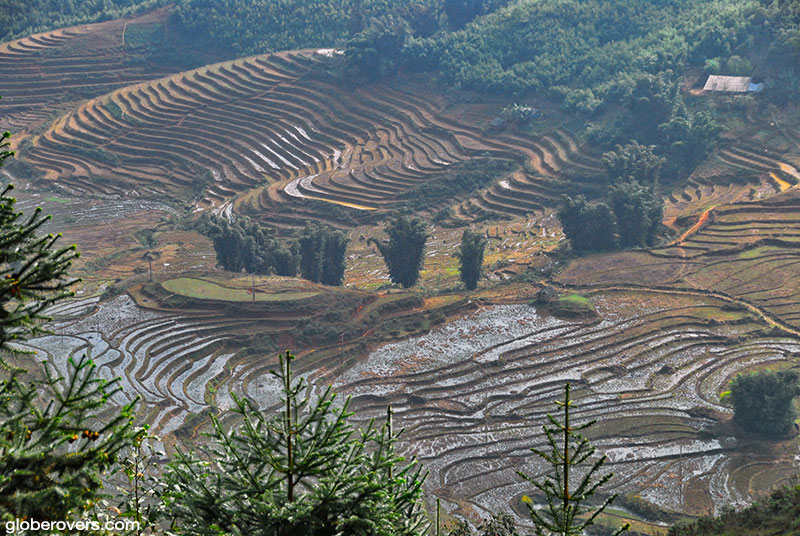
Red Dzao lady 
Black Hmong woman 
Red Dzao lady at Ta Van
Sapa is in Vietnam’s far north, close to the southeastern border of China’s Yunnan Province and is known as the “Land of the Big Skies”. Here, tranquillity prevails over the vast cascading rice terraces and rippled mountains covered in low-hanging fog.
The region is home to many indigenous hill tribes, welcoming travellers who go on single or multi-day hikes from the town of Sapa.
As you sip a hot and strong Vietnamese coffee, you will realise you came to the right place where tranquillity rules!
Getting to Sapa is a thrilling experience in itself. A few
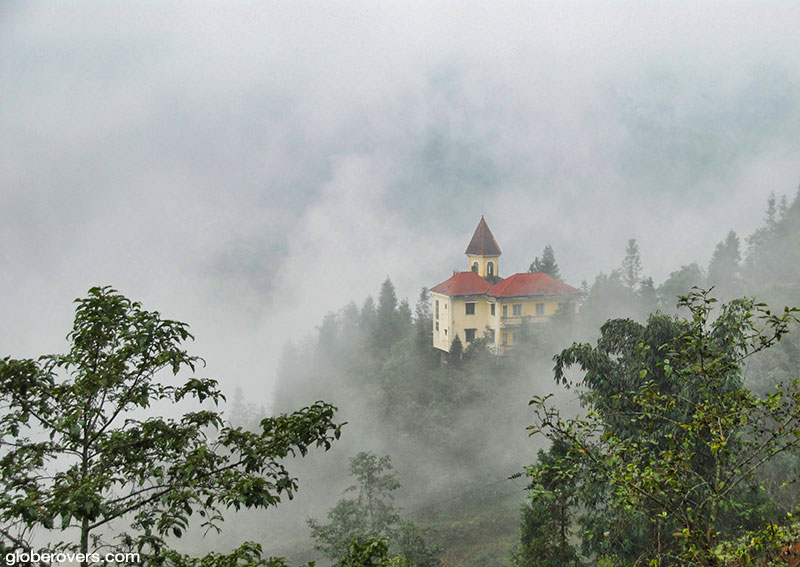


An overnight train (2 or 3 different trains) leaves Hanoi in the evening and arrives in the small town of Lao Cai at about 5 or 6 am. Choose one of several cars in each train, such as the Orient Express, Fanxipan, Sapaly, King Express, Tulico, Livitrans, Royal, Friendly, Green, or the very luxurious Victoria Express (for which you need to be booked in the luxurious Victoria Hotel).
Upon arrival at the Lao Cai station, a representative from your hotel in Sapa will greet you and take you on the 45-minute exhilarating drive up the mountains to Sapa.
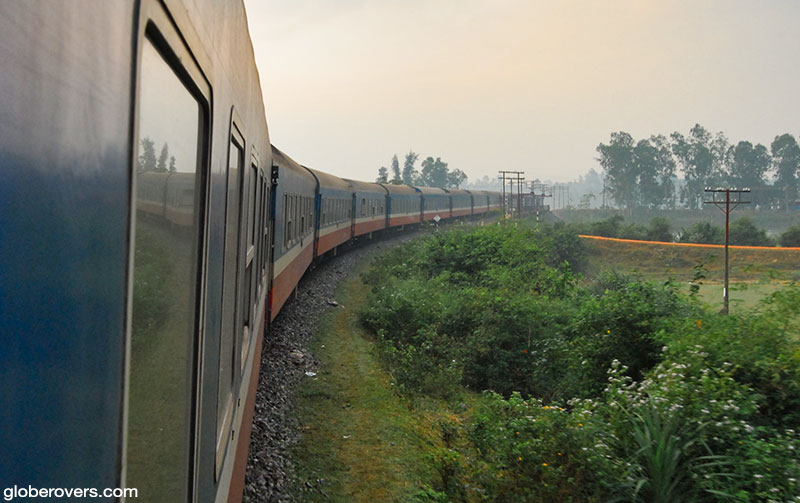
First sights upon arrival in the mountain town of Sapa will be the colourful Black Hmong and Red Dzao (or Dao) people. You will also lay your eyes on the impressive Fansipan Mountains, the highest in Indochina at 3,142 metres (10,308 ft). Or, more likely, you will see Fansipan enshrouded in thick fog and low hanging clouds.
Sapa was first inhabited by highland minorities such as the Black and Flower Hmong, the Yao, and the Tay and Giay people. Today these four main minority groups are still present but you will also notice many Red Dzao and Zai people.
Using Sapa as your base, you can take day trips (or multi-day trips) to villages around the area. Most areas require permits and a local guide. Shop around for the best rates, which vary from US$10 per person to $20 for a 2-person “private tour” – note the fees may have gone up recently. If you do a 2-day trip, go with a group tour (4 to 8 people) as a “private tour” is not worth the money. If you go on a longer trip (more than a view days), you may find a private tour (1 to 2 persons) offers a lot more flexibility if you prefer to keep a distance from other travellers.
Don’t plan on doing the trekking on your own as tour guides are required by law. A local government official informed me that this rule was introduced after locals committed suicide after being converted by missionaries.

Hmong girl at Hau Thao village 
Boy at Ta Van village 
Boy at rice terraces outside Sapa 
Hmong girls at Hau Thao village
Between treks, enjoy the stunning views from your Sapa guesthouse where many guesthouses have great views over the deep terraced valleys. Visit the authentic markets and enjoy the superb local Vietnamese coffee.
Sapa has many restaurants catering to both travelling Vietnamese and foreign tourists. Prices are high by local standards but very low by international standards.
Standard practice for foreigners in Vietnam: Always be on the alert for scams and gross over-charging for which Vietnam has gained a reputation!

Travellers Tips:
***************************
Hanoi: Eat at Quan An Ngon for a great upscale local Vietnamese experience
Hanoi: Avoid the Khai’s Brothers Cafe (which for years has been a favourite among travellers). It has become so bloated with pride that the expensive prices do NOT justify the totally inferior food.
Hanoi: Avoid the Cha Ca La Vong restaurant, for the same reasons as the Khai’s Brothers Cafe.
Sapa: Stay at the Sapa Eden Hotel. Fantastic views and awesome staff.
Sapa: Eat at one of the many restaurants with great views. Food is generally similar so choose the cosiest restaurant with the best views.

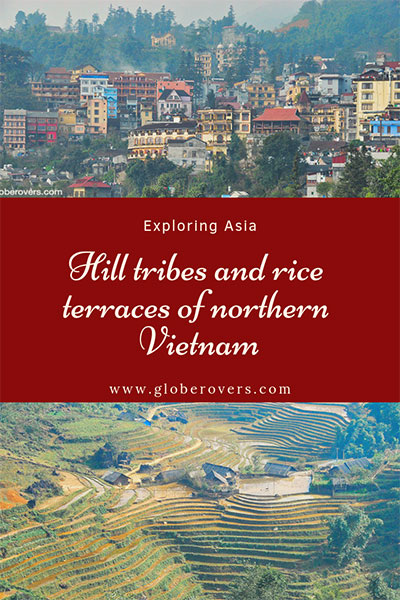

Blog post and photos by Peter who has been travelling almost full-time since 2005 and has been to over 122 countries. He visited several countries, such as Japan, more than 20 times. Peter is Editor-in-Chief and Publisher of GlobeRovers Magazine, an independent travel magazine focused on intrepid destinations.


